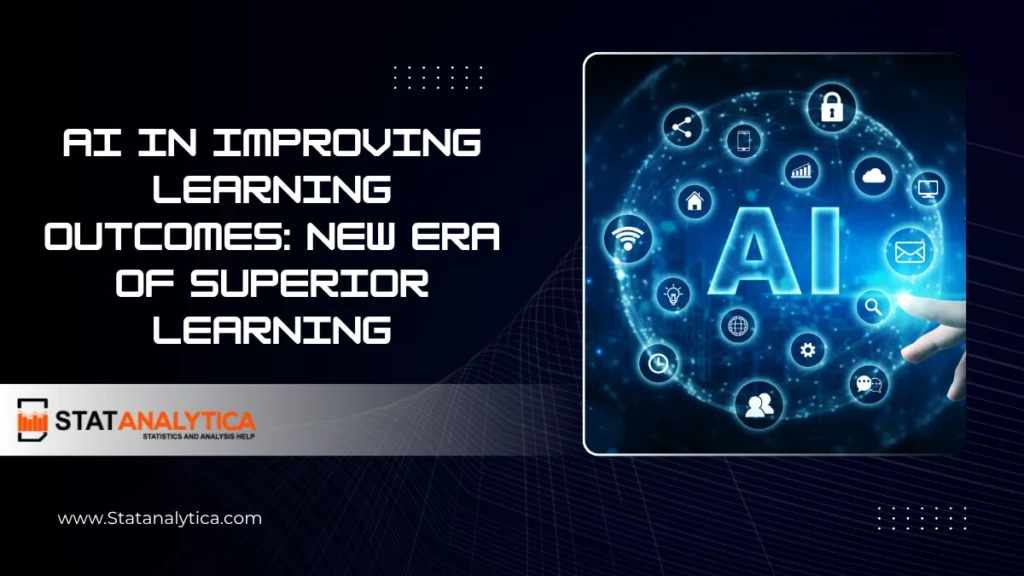The integration of Artificial Intelligence (AI) into the educational landscape is not merely a technological upgrade; it represents a fundamental paradigm shift toward highly individualized, data-driven, and hyper-efficient learning. For decades, the ambition of educators has been to provide personalized instruction—a perfect, dedicated tutor for every student. Today, AI is making that ambition a scalable reality, driving superior learning outcomes across all levels of the academic spectrum.
This deep dive explores the multifaceted role of AI in revolutionizing student success, the profound benefits it delivers to educators, and the crucial ethical guardrails required to ensure a truly equitable future for education.
AI in improving learning outcomes
Table of Contents
The Direct Impact on Student Success
AI’s most immediate and measurable effect is its capacity to create deeply personalized learning pathways that cater precisely to individual cognitive styles, pace, and knowledge levels. This level of adaptation accelerates mastery and significantly improves retention.
A. Hyper-Personalization: The End of “One-Size-Fits-All”
The core promise of AIEd is its ability to move beyond standardized content delivery.
- Adaptive Learning Systems (ALS): These systems, powered by complex algorithms, are constantly analyzing a student’s responses, errors, and progress. The ALS doesn’t just grade an answer; it asks why a student made a mistake. Did they fail due to a lack of foundational knowledge, a conceptual misunderstanding, or a simple calculation error? Based on this diagnosis, the system instantly modifies the curriculum flow, providing remedial modules, varied exercises, or advanced content as needed. This process ensures that time is spent only on areas where the student is currently struggling or ready for enrichment, maximizing learning efficiency.
- Intelligent Tutoring Systems (ITS): Acting as sophisticated digital mentors, ITS provide step-by-step guidance that mimics human one-on-one tutoring. They can generate thousands of unique practice problems, offer hints upon request, and use natural language processing (NLP) to understand complex student queries, guiding them toward the solution rather than simply providing the answer. This critical distinction encourages true problem-solving and deeper conceptual understanding.
- Predictive Analytics for Proactive Support: AI models can analyze longitudinal data, engagement metrics, and socio-economic factors to identify students at risk of academic failure or dropping out—often weeks or months before a human educator might notice the trend. This “early warning system” allows teachers and counselors to deploy targeted, human-led interventions, turning potential failure into success.
B. Accelerating the Learning Loop through Feedback
Effective learning hinges on timely, constructive feedback. AI dramatically compresses the time between action (submitting work) and reaction (receiving feedback).
- Instantaneous, Actionable Feedback: For complex subjects like mathematics or programming, AI provides real-time feedback and corrective prompts the moment a mistake is made. This immediate correction prevents the student from practicing and solidifying errors, a common issue in traditional learning.
- Scalable Assessment and Grading: AI-driven tools can grade large volumes of work, from multiple-choice tests to complex essay structures, in minutes. This frees students from waiting weeks for paper-based grades and allows them to move to the next topic with a clear understanding of their performance. More importantly, it liberates educators from grading drudgery, redirecting their focus to more nuanced tasks like evaluating creativity and critical thinking.
Empowering the Modern Educator
AI does not sideline the teacher; it elevates their role from content delivery to architect of learning, focusing their expertise on mentorship, emotional support, and the cultivation of higher-order skills.
- Data-Driven Pedagogical Refinement: AI provides educators with granular data dashboards that map every student’s interaction with the curriculum. Teachers can see which specific lessons are consistently causing confusion for a majority of the class, allowing them to instantly refine their teaching methods, reteach difficult concepts, or adjust the course structure based on objective, real-world evidence rather than intuition.
- Personalized Lesson Planning: AI tools can instantly generate differentiated learning materials. A teacher can input a single lesson plan and ask the AI to create three distinct versions: one for students who are behind, one for the general class, and one for advanced learners. This capability saves hours of preparation time weekly, which can be reinvested in direct student interaction.
- Cultivating 21st-Century Skills: Paradoxically, AI facilitates the development of skills it can’t master: critical thinking, creativity, and ethical reasoning. By automating rote memorization and procedural tasks, AI platforms free class time for project-based learning, collaborative problem-solving, and deep ethical discussions—activities essential for future workforce readiness. Students learn with AI to understand its capabilities and limitations, preparing them to be informed creators, not just passive consumers, of the technology.
The Ethical Imperatives and Sociological Challenges
The widespread adoption of AIEd is accompanied by significant ethical and logistical challenges that must be proactively addressed to ensure the technology serves as a tool for equity, not division.
A. Addressing the Digital and Equity Divide
The benefits of AI must not be reserved for well-funded institutions.
- Access and Infrastructure: Implementing AI requires robust digital infrastructure, high-speed internet, and hardware (laptops or tablets). Schools in rural or low-income communities often lack these basic necessities, risking an exacerbated digital divide where AI widens the gap between academic achievers and those left behind. Policy and funding must prioritize foundational infrastructure and accessibility for all.
- Algorithmic Bias: AI systems are trained on historical data, which often reflects and embeds existing societal biases related to race, gender, and socio-economic status. If left unchecked, AI algorithms could inadvertently perpetuate these inequities through biased grading, resource recommendations, or predictive risk assessments. Continuous auditing and a commitment to fairness in data selection are non-negotiable.
B. Privacy, Trust, and Critical Engagement
The collection of student data, while necessary for personalization, raises serious ethical questions.
- Data Privacy and Security: AI systems collect vast amounts of sensitive student information (academic, behavioral, potentially even biometric). Educational institutions must adopt strict data governance frameworks that ensure transparency, provide clear ownership rights to the student/family, and comply rigorously with international data protection laws.
- Risk of Cognitive Offloading: Over-reliance on AI, especially generative models, poses a threat to the development of fundamental skills. If students use AI to generate answers or write essays without internal cognitive effort, they miss the struggle necessary for deep learning. Educators must redesign assignments to be “AI-resistant,” focusing on synthesis, application, and critique, where the AI serves as a tool for research or drafting, not a substitute for thought.
- The Human-Connection Imperative: While AI is efficient, it lacks the human capacity for empathy, emotional intelligence, and mentorship. The future of AIEd must maintain a human-in-the-loop model, using technology to optimize efficiency so that teachers can maximize human connection and support student well-being.
Also Read: Generative AI in Educational Research and AI in Education
Final Thought
The role of AI in improving learning outcomes is nothing short of revolutionary. It offers the unprecedented potential to close achievement gaps, elevate teaching effectiveness, and prepare students for a rapidly automating world. However, this potential can only be realized through responsible, ethical, and inclusive implementation. By addressing the challenges of equity, bias, and digital literacy head-on, we can ensure that AI fulfills its promise: not just a tool for better test scores, but a powerful engine for a more engaged, equitable, and successful generation of learners.
Can AI really replace human teachers?
No, AI cannot replace human teachers. AI excels at automating mechanical tasks like grading, data analysis, and generating personalized practice. However, it cannot replicate the essential human elements of teaching: empathy, mentorship, inspirational guidance, social-emotional development, and fostering classroom culture. AI functions as a powerful teaching assistant that frees up the human educator to focus on higher-value activities.
How can schools ensure academic integrity when students can use generative AI?
Instead of relying solely on flawed AI detection software, educators are shifting their focus:
Assignment Redesign: Creating authentic, process-based, and personalized assignments that are difficult for AI to complete (e.g., asking students to analyze local context, synthesize current class discussions, or defend a position orally).
Promoting Transparency: Requiring students to cite AI usage as they would any other resource, integrating AI use as a necessary tool, and focusing assessment on the student’s interaction with the tool, rather than the final output alone.
What is meant by “AI in Education” (AIEd)?
AI in Education (AIEd) refers to the application of machine learning algorithms and computational techniques to enhance teaching and learning processes. This includes adaptive learning platforms, intelligent tutoring systems, automated grading, and tools that help manage and personalize educational content. The goal is to make education more efficient, engaging, and individualized.


